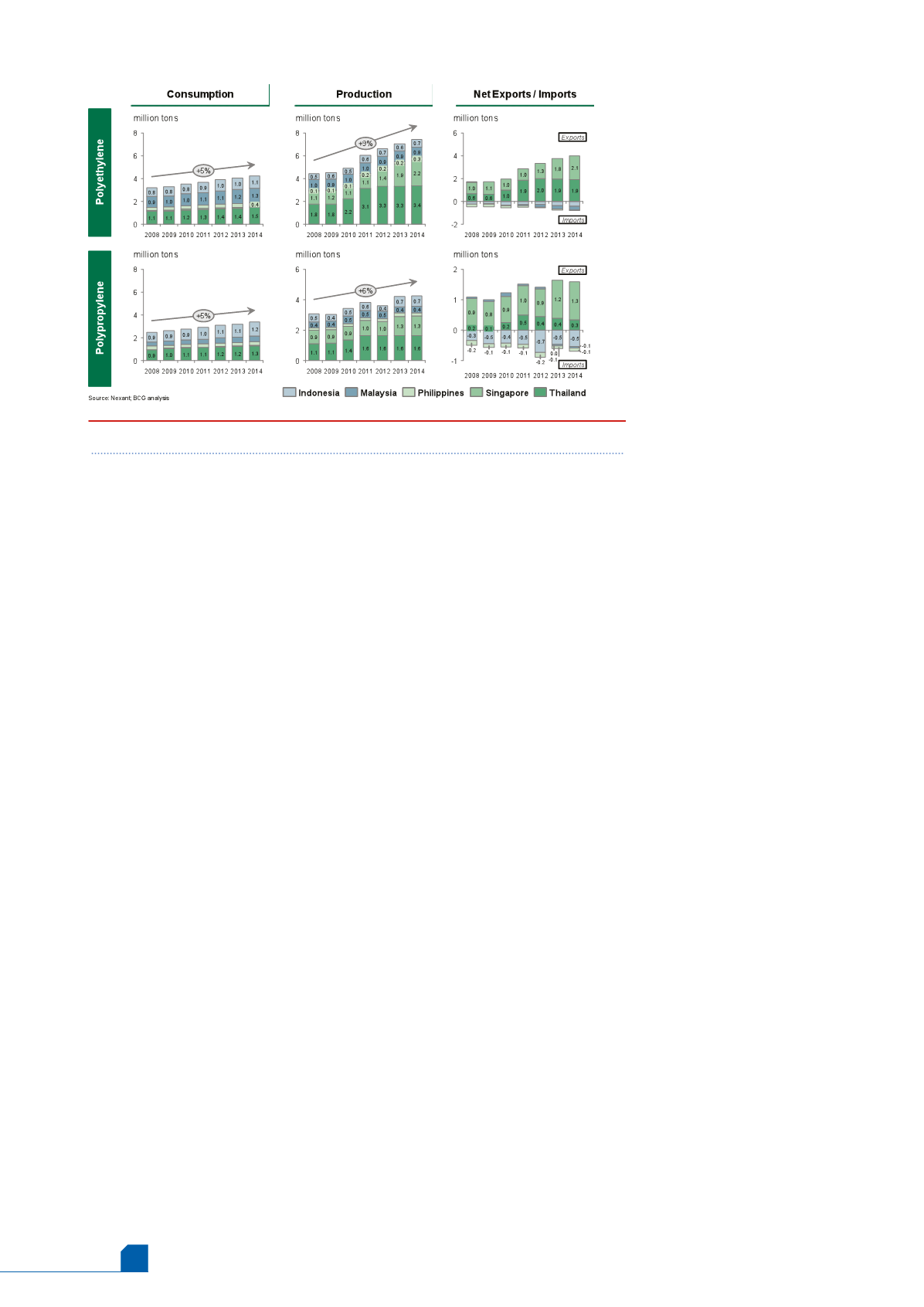
14
December
2014
HYDROCARBON
ENGINEERING
recently took the final investment decision (FID) to proceed with a
refinery and petrochemical integrated development project
(RAPID). Indonesia is also moving forward to revamp its existing
refineries and add petrochemicals complexes. Together, the
cumulative investments in the ASEAN petrochemicals
megaprojects are expected to total more than US$ 50 billion by
2020.
The national oil companies (NOCs) in the ASEAN region are
often the main project developers of these megasites. The primary
drivers for developing these sites are to achieve greater self
sufficiency for petroleum fuel products and the basic
petrochemicals/polymers, create an export hub, create local
employment opportunities and develop the local workforce.
These NOCs will need to address a number of critical questions to
ensure the long term attractiveness and stability of returns on
these megasites in a context of increasing competitive pressure
fromMiddle East and North American regions.
An increasingly over supplied
ASEAN market
Petrochemicals demand in ASEAN countries has been growing
rapidly over the last decade and is expected to continue at a
similar pace over the next decade driven by strong
macroeconomic fundamentals, a growing middle class and
increasing urbanisation in the region. Average GDP growth for the
ASEAN bloc of countries has been averaging approximately 5%
since 2007 and the GDP is expected to increase by approximately
1.5 times by 2020. In addition, approximately 96 million people are
expected to have joined the middle class between 2010 and 2015
and the number is expected to grow further in the coming years.
As such, demand for basic petrochemicals has been growing
rapidly across most of the countries. For example,
polypropylene (PP) and polyethylene (PE) demand have been
growing at approximately 4.5 - 6.1% between 2008 and 2014 across
the key consuming nations of Indonesia, Thailand, Malaysia and
Vietnam. However, supply has also been increasing rapidly
especially in Singapore, Thailand and Philippines which have seen
more than double digit growth in PE and PP production between
2008 and 2014. As such, the ASEAN countries currently face a
structural oversupply within the region with increasing supply/
demand imbalances between
countries where Indonesia,
Malaysia and Vietnam have seen
growing imports while Singapore
and Thailand continue to be major
exporters of PE and PP (Figure 1).
The same is also true for the
aromatics products such as
benzene and styrene.
‘Middle of
the pack’ cost
positioning
Asian petrochemical producers and
ASEAN players in particular have
traditionally had a low share of
cost competitive ethane based
steam crackers. Regions such as the
Middle East have traditionally
enjoyed the lion’s share of ethane
(or ethane/propane) crackers due to the availability of cheap gas
feedstock but with the shortage of gas in the region, new
megaprojects in the Middle East are moving to more mixed
feedstock. Nonetheless, by 2018 the Middle East region will still
have approximately 74% of its 33 million t cracker capacity run on
either ethane or ethane/propane steam crackers. With the rise of
the shale gas revolution in North America and setting up of new
projects based on the availability of cheap gas, North America is
expected to have almost 50% of its 43 million t cracker capacity
based on ethane or ethane/propane steam crackers by 2018. By
contrast, that number is only 9% in Asia with its projected
70 million t cracker capacity with a further 7% of capacity run on
coal based olefins plants mainly driven in China. In contrast to
these three regions, Europe only has 3% of its 24 million t cracker
capacity run on ethane/propane feedstock.
Given this competitive landscape, the ASEAN producers are
currently disadvantaged compared to North American, Middle
Eastern and other Asian producers (Figure 2). Seen as part of the
ethylene cost curve, the ethylene margin of ASEAN producers
is expected to reduce from approximately US$ 110/t to
US$ 10 – 50/t by 2020 as the new projects planned in Asia come
online. This decrease in margins comes despite the fact that
ASEAN producers are closer in proximity to the demand centres in
north east Asia and have lower product logistics costs compared
to other regions.
The dynamically evolving competitive landscape places
significant challenges on the long term competitiveness of the
megasites currently being set up in ASEAN countries. The key
question confronting the ASEAN producers is their viability as a
export hub and whether their feedstock disadvantage can be over
compensated by the world class logistics and geostrategic
positioning and proximity to north east Asia.
Maximising value from ASEAN
megaproject investments
ASEAN producers are currently setting their megasites through
significant brown field expansions of existing sites or green field
investments in new locations. For example, Vietnam has made the
FID to build one refinery and is planning another integrated
refinery and petrochemicals project. These projects in Vietnam
Figure 1.
Supply/demand balance of PE and PP across key ASEAN countries.


